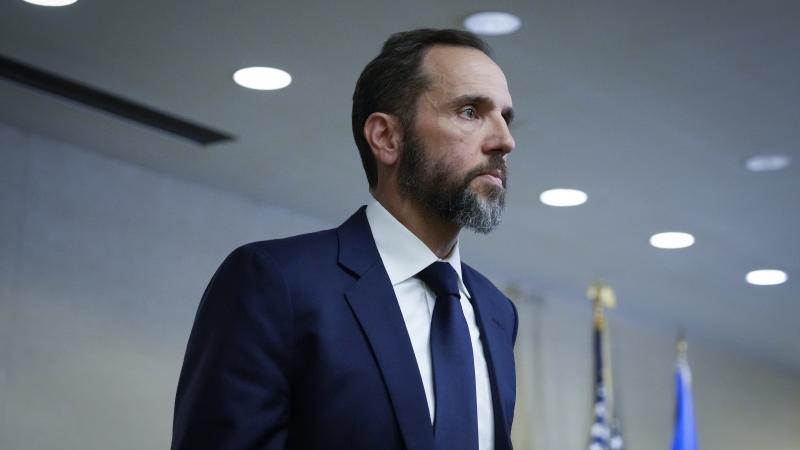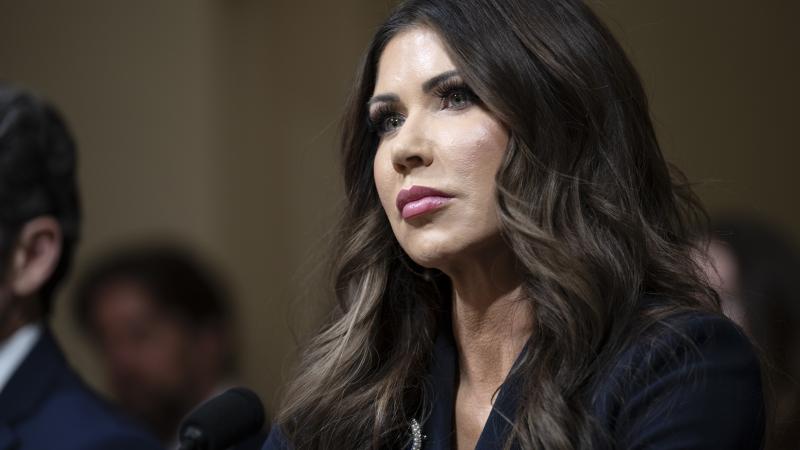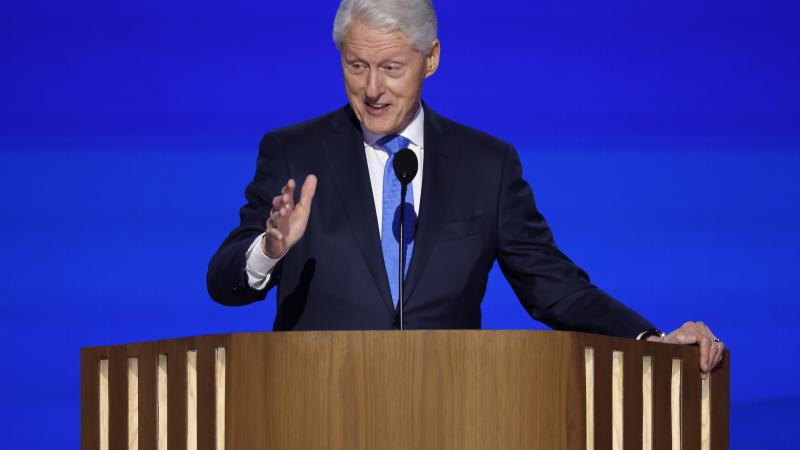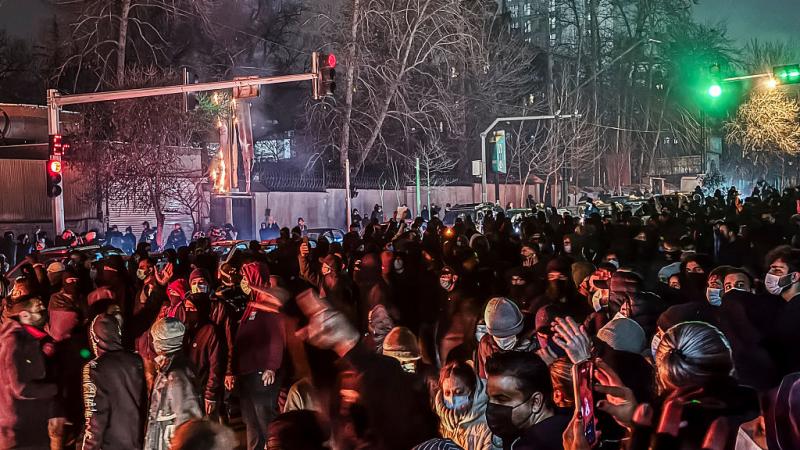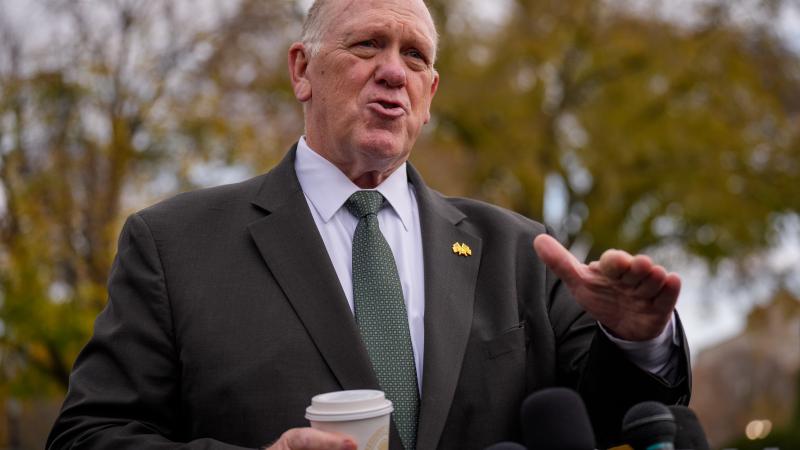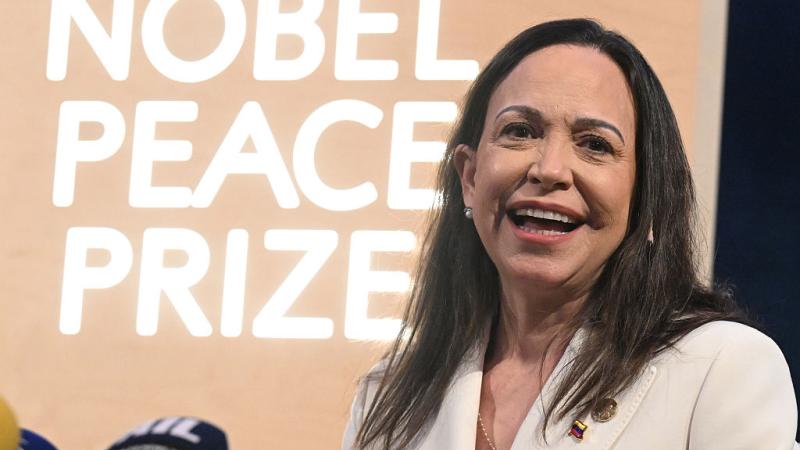Polling showing Harris in lead flagged by industry experts for voter samples
“So what they're doing is they're polling fewer Republicans. They're polling a disproportionate number of Biden 2020 voters in these states that were dead even,” pollster John McLaughlin said. There does not to be any consensus on any polls' accuracy.
Vice President Kamala Harris has enjoyed a noticeable surge in the polls – particularly national polls – since becoming the Democratic standard bearer, but the rapid shift in her position has left some industry analysts questioning the apparent boost in the formerly quite unpopular vice president’s standing. In her 2020 run, she struggled to break 3% before dropping out, according to The Hill.
Prior to becoming the Democratic nominee, Harris suffered from decidedly poor approval ratings and Trump initially held the lead over her in a head-to-head matchup. The average quickly flipped, however, in the wake of several surveys showing Harris ahead. Those surveys, however, have attracted scrutiny from an array of pollsters either due to their lack of transparency about the sampling methodology or from oversampling Democrats.
“So what they're doing is they're polling fewer Republicans. They're polling a disproportionate number of Biden 2020 voters in these states that were dead even,” pollster John McLaughlin said this week on the “Just the News, No Noise” television show.
"They're trying to suppress our vote"
“They're saying the Biden 2020 voters should be four or five points higher. It's ridiculous. So what they're doing is they're trying to pump Harris up. They're trying to suppress our vote. And this is, you know, there's smart people doing this, so I think it's intentional.”
Harris currently leads Trump by 1.5% in the RealClearPolitics polling average, with 48.2% support to his 46.7%. She leads by the same margin in a five-way race including the Green Party’s Jill Stein and independents Robert F. Kennedy, Jr. and Professor of Philosophy and Christian Practice at Union Theological Seminary, Cornel West.
At present, the only polls showing Trump ahead in the two-way race average come from Fox News, Rasmussen Reports, and CNBC. All others show Harris with a one-to-four-point lead. Trump led Harris in the RCP average until Aug. 5 and has not reclaimed the lead since. Neither RCP average includes survey data from McLaughlin & Associates.
The "Harris Honeymoon"
After Harris became the de facto Democratic nominee, Trump pollster Tony Fabrizio distributed a memo forecasting a so-called “Harris Honeymoon” in which the vice president would see a surge in the polls due to an uptick in favorable coverage.
"The coverage will be largely positive and will certainly energize Democrats and some other parts of their coalition at least in the short term. That means we will start to see public polling – particularly national public polls – where Harris is gaining on or even leading President Trump,” Fabrizio wrote in late July.
Fabrizio also asserted that the electorate’s positions on critical issues such as inflation, crime, and inflation, were unlikely to change with the Democratic ticket, saying “the fundamentals of the race stay the same.”
Speaking on the “John Solomon Reports” podcast earlier this month, pollster Scott Rasmussen called the polling boost a “sugar high” and concurred with Fabrizio based on his own data that voter opinions on issues appeared split from their opinion of the topline candidates. He further insisted that voters remained largely ignorant of Harris’s actual positions and that increased awareness of her stances on key issues could sway the electorate. Even famed Democratic pollster and campaign veteran James Carville warned Democrats about their “giddy elation” over Vice President Harris’s presidential campaign.
“It's very much a sugar high… Right now, when we look at all the issues and we ask what voters know about Vice President Harris? Well, they know that she's very pro-choice on abortion. They don't really know anything else about her,” Rasmussen said.
“One of the issues we've highlighted because of the events of last week in the Olympics is that most voters strongly oppose the idea of letting biological males compete in women's sports,” he went on. “In fact, only 21% of Harris's voters – her own supporters think that should be allowed, and yet hardly anybody knows that Vice President Harris is a strong advocate of letting those biological males compete in women's sports.”
“So the question becomes, you know, when will people learn? What will people learn about Vice President Harris, and when will they learn it? Because at the moment, it's a sugar high, because she's not Joe Biden, she's not Donald Trump,” he concluded.
Initial polling showed Harris faring only slightly better than Biden against Trump. McLaughlin, for his part, highlighted the rapid change from initial polling showing Trump with a lead over Harris, saying “you had a Republican convention totally united and all of a sudden, that Sunday after the convention, Joe Biden withdraws, handpicks Kamala Harris.”
“We go in the field, take another poll, and Trump's leading Harris by two points. All that happened in a month. He went into the month up two points. He was out of the month leading Harris by two points,” he went on.
But Harris gradually gained ground until mid-August, when a handful of surveys showed Trump gaining ground and the race stabilizing to some extent.
What’s in the sample?
A critical factor in determining a poll’s final results are the characteristics of the survey group and how closely they align with the broader population.
The Washington Post released a survey last week in conjunction with ABC News and Ipsos. The topline figure showed Harris with a four-point lead over Trump, 49% to 45%, representing one of the largest Harris leads of recent surveys. In the five-way race, Harris led by three points.
The survey questioned 2,336 U.S. adults, including 1,975 registered voters, from Aug. 9-13. The registered voter sample featured a +/- 2% margin of error. Notably, the survey did not release the demographic questions about the sample. The sample came from the KnowledgePanel, which the poll says matched “U.S. population benchmarks” for myriad demographic characteristics based on the March 2023 population survey from the Census Bureau.
“When you saw the Washington Post Ipsos poll, there's no transparency,” McLaughlin said. “They say it's weighted according to the census. It's picked from their in-house panel, and it's all done online, and there's an obvious bias.”
The survey did not disclose a breakdown of respondents by party affiliation.
Fewer Republicans all around
Statewide polling, moreover, has also been difficult for Trump, albeit to a lesser extent. Exit polls from the 2020 election may provide a benchmark for estimating the partisan affiliations of voters. But at least some surveys have deviated significantly from that breakdown and crafted survey groups that overrepresent Democrats or under-represent Republicans.
“And you're seeing polls like, for example, like the New York Times… their Siena polls over the weekend, where in Georgia… CNN exit polls in 2020 had 38% Republicans, this [is] 5% fewer Republicans… in the New York Times/Siena poll,” McLaughlin said.
Thirty-three percent of respondents in the NYT/Siena College poll’s Georgia survey self-identified as Republicans. Trump led Harris 50% to 46% in the Peach State's polling results.
“[S]ame thing in North Carolina, 5% fewer Republicans,” he went on. That iteration of the NYT/Siena survey showed Harris leading Trump in the Old North State 49% to 47% and was an outlier among North Carolina surveys in the RealClearPolitics polling average.
“Michigan… They [were] 38% in the 2020 exit polls, Republicans, their poll it’s 29. Now nine fewer,” he added. The latest NYT/Siena survey in Michigan shows Harris with a four-point lead of 50% to 46% in the Wolverine State. That survey also saw only 27% of registered voters self-identify as Republicans in Michigan.
In Wisconsin, the 2020 exit polls had 37% Republicans. In the recent New York Times poll, Siena had 27% Republican. Ten points fewer,” he also said. Harris led Trump with 50% to 46% in the state.
National polling vs Electoral Map
Notably, the leader in national polls does not necessarily reflect the state of the race. Trump himself lost the popular vote in 2016, but still managed to win the White House through the Electoral College.
State by state, Trump still enjoys an advantage over Harris that, should it hold, would see him win the contest without the popular vote for a second time.
“The average of the RealClearPolitics polls, they've got, they've got Harris up a point right now, but it's got some of those bad polls in there,” McLaughlin said. “And then when you look at where they're no toss ups on the Electoral College vote, they got Trump at 287 and they got Harris [at] like 231, something like that. So it's a close race, but Trump's ahead.”
RealClearPolitics currently projects Trump to win 287 electoral votes to Harris’s 251 based on its state-by-state averages, several of which show only single-digit margins for either candidate. That no-toss-ups projection currently shows Trump winning Pennsylvania, North Carolina, Georgia, Nevada, and Arizona. Harris currently leads in Wisconsin, Michigan, and Virginia. A majority of 270 electoral votes is required to elect the President.
Ben Whedon is an editor and reporter for Just the News. Follow him on X.
The Facts Inside Our Reporter's Notebook
Links
- according to The Hill
- RealClearPolitics polling average
- five-way race
- Tony Fabrizio distributed a memo
- James Carville warned Democrats
- Initial polling
- race stabilizing
- NYT/Siena College pollâs
- RealClearPolitics polling average
- NYT/Siena survey in Michigan
- self-identify
- Wisconsin
- Electoral College
- no-toss-ups projection
- Follow him on X.

